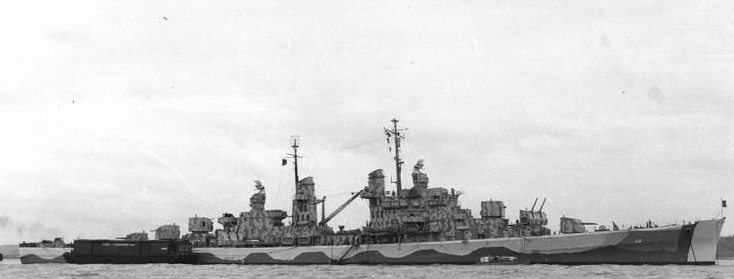Tuesday marks the seventieth anniversary of the sinking of the U.S.S. Juneau, a light cruiser that participated in the naval battle of Guadalcanal during World War II. Six-hundred and 87 sailors perished during the sinking on Nov. 13, 1942.
Included in the slideshow below are pictures from Saturday’s event at the Juneau-Douglas City Museum that included display and reading of recently acquired letters originally sent by Seaman William George Meeker from aboard the U.S.S. Juneau to Winifred Blohm in Harrison, New Jersey.
The U.S.S. Juneau was a light cruiser engaged in one of the fiercest naval battles of World War II. Along with the cruisers Helena and San Francisco, the Juneau had retired from the naval battle of Guadalcanal to head for a nearby Allied port for repairs. The Juneau was already crippled by a torpedo hit. Another torpedo later sent the Juneau rapidly to the bottom. As many as many as hundred sailors may have initially survived, but crews of the Helena and San Francisco may have thought that no could have survived the explosion and quick sinking. There was also the potential of continued torpedo attacks.
Only ten sailors survived shark attacks and exposure after eight days in the water. Among the 687-sailors who lost their lives were the five Sullivan brothers aboard the Juneau.
Lt. Cmdr. Miguel Vasquez, officer-in-charge of the U.S. Navy’s Pacific Fleet Maritime Homeland Defense Detachment Alaska, was a featured speaker at the Juneau-Douglas City Museum on Saturday. Using a power point presentation, he described the first ship to bear the name Juneau and the battle in which she was crippled and eventually sunk. He gave us a recap following his presentation.
Vasquez says the battle was very chaotic with at least one officer on-board a destroyer calling it ‘a bar room fight with the lights turned out.’
“It was a tactical victory for the Imperial Japanese Navy,” said Vasquez who also noted that the Japanese did not do enough damage to reinforce Guadalcanal. “It turned out to be more of a strategic victory for the U.S. forces.”
What makes this anniversary of the Juneau’s sinking unique is the recent acquisition of letters originally sent by a sailor aboard the cruiser. Seaman William Meeker, sent seventeen letters to Winifred Blohm, his next door neighbor and good friend in New Jersey. The last one was sent exactly a week before the U.S.S. Juneau’s sinking.
Jodi DeBruyne, curator of collections and exhibits at the Juneau-Douglas City Museum, describes the donated collection.
“They tell a really great personal story that everybody can relate to. Friendship, love, honor are just themes that transcend time,” said DeBruyne.
Also on Saturday, local actor Bryan Crowder provided his voice for the words written by the 21-year old Meeker, who thought very fondly of his neighbor in Harrison, New Jersey.
“‘Dear Winnie. How are you, Blondie? How are your big brothers making out?'”
The letters, donated by Blohm’s daughter and son-in-law Mary and Ray Testa, will remain in the care of the Juneau-Douglas City Museum until they are brought out for display again.
Also included: pictures of Meeker and a picture of Winifred Blohm visiting Juneau in 1991. DeBruyne said the Testas are trying to track down another picture of Blohm visiting the U.S.S. Juneau memorial on the waterfront.
Blohm passed away in 1998.



Leave a Reply
You must be logged in to post a comment.